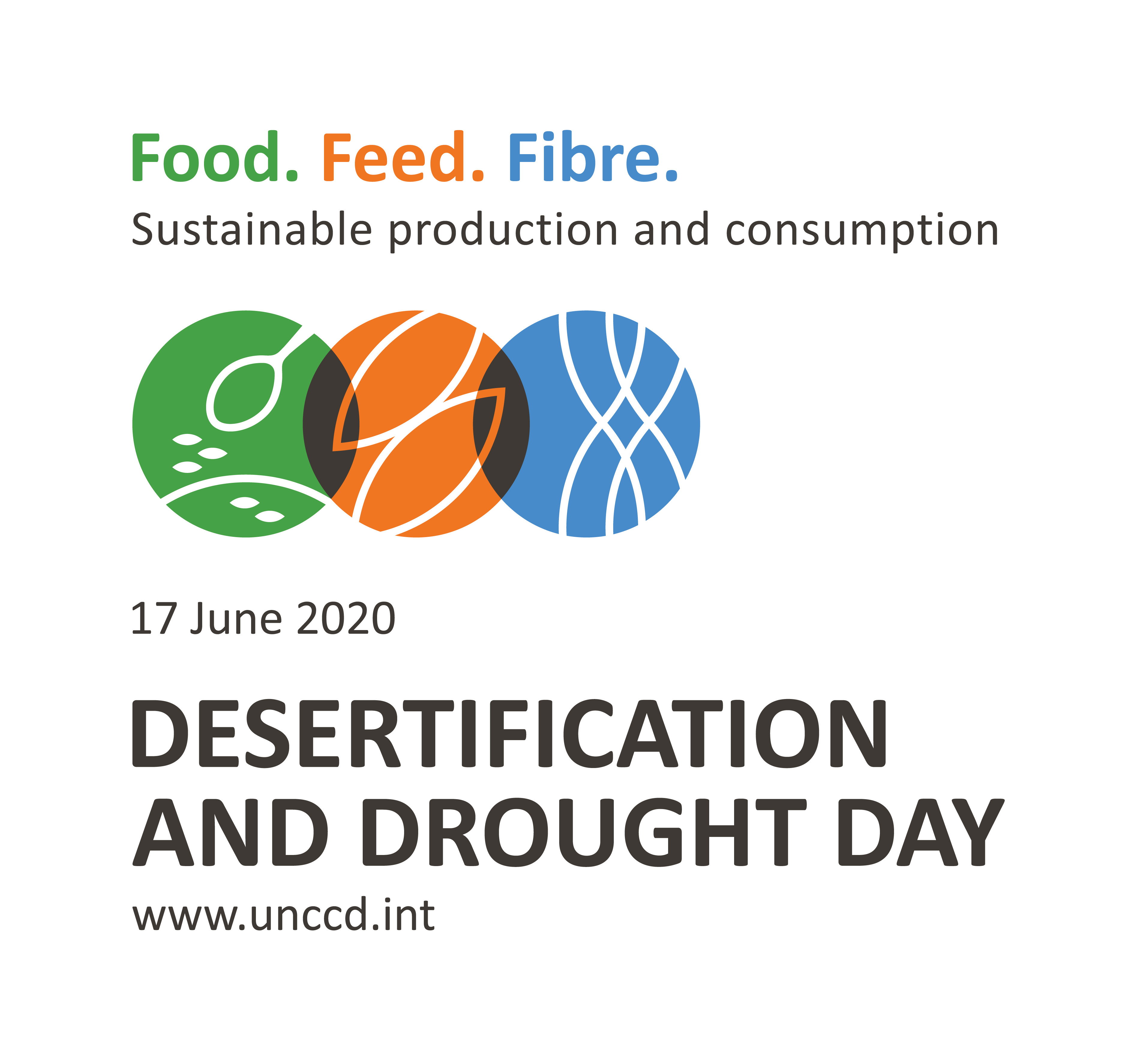 UNCCD
UNCCD
Desertification and Drought Day -- 17 June 2020
Desertification and Drought Day – until this year known as The World Day to Combat Desertification and Drought – is observed every year to promote public awareness of international efforts to combat desertification. The day is a unique moment to remind everyone that land degradation neutrality is achievable through problem-solving, strong community involvement and co-operation at all levels.
As populations become larger, wealthier and more urban, there is an increasing demand for land to provide food, animal feed and fibre for clothing. Meanwhile, the health and productivity of existing arable land is declining.
To have enough productive land to meet the demands of ten billion people by 2050, lifestyles need to change. Desertification and Drought Day, running under the slogan “Food. Feed. Fibre.” seeks to educate individuals on how to reduce their personal impact.
Food, feed and fibre must also compete with expanding cities and the fuel industry. The end result is that land is being converted and degraded at unsustainable rates, which damages production, ecosystems and biodiversity.
With changes in consumer and corporate behaviour, and the adoption of more efficient planning and sustainable practices, there could be enough land to meet the demand. If every consumer were to buy products that do not degrade the land, suppliers would cut back the flow of these products and send a powerful signal to producers and policymakers.

More Information:
The Rio Conventions
Desertification And Drought Day Observance Event Website
Stories: How to Stop the Decline of Lake Chad